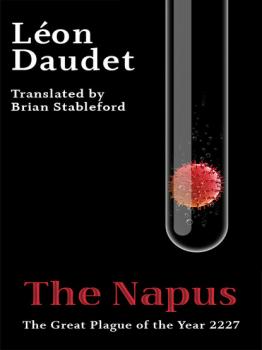ТОП просматриваемых книг сайта:
Leon Daudet
Список книг автора Leon DaudetАннотация
In Paris, on the Avenue des Champs-Élysées, an old man suddenly vanishes without a trace: a new plague has reached France, and will soon grow to terrible proportions. The event is witnessed by a cytologist working at the Aristotle Institute, who is also a Polyplast–the result of an experiment in selective breeding intended to produce pacifists, but which has also had perverse results. As a result of his presence at the crucial event, the Polyplast becomes a privileged observer of the entire tragedy, of which he naturally sets out to write a personalized history, explaining how the new plague became the casus belli of yet another war in an endless series, fought with the aid of «Archimedes»: powerful, long-range weapons that would destroy the world in no time were it not for their habit of misfiring, and only killing tens of thousands of people instead of millions. The Napus, first published in 1927, remains one of the classics of absurdist science fiction.
Аннотация
In this classic science fiction novel, Romain Ségétan, a brilliant scientist whose creativity is intimately linked to his erotic experience, particularly in its visual dimension, is struggling to develop a technology to capture and control the «waves of time,» which will allow recurrent images and other echoes of the past to be brought forward into clearer focus. After being temporarily blinded by a jealous rival in love, he feels impelled to celebrate the restoration of his sight by means of a historical re-enactment of s series of frescoes found in the recently-excavated Villa of the Mysteries in Pompeii, aided and facilitated by his wave-enhancing apparatus, the Dyonisos. The result testifies to the subtle force of the waves of time, both in history and on the contemporary human psyche. A strikingly original–and erotic–SF novel about the nature of time!


